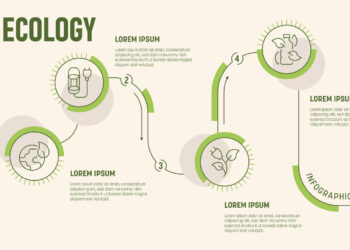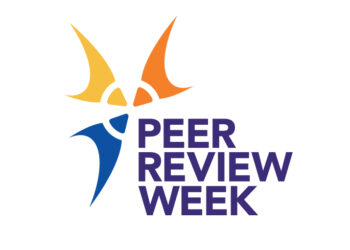
About 20 years ago Brewster Kahle said to me that “everybody wants to be a publisher.” This caught me by surprise. Even then (this was before Alexa and The Internet Archive) Brewster was someone to take seriously (we had contracted with Brewster for his WAIS technology, the technical underpinning for Britannica Online, which was launched in October 1994), but even so, it was very hard for me believe the proposition. Sitting at Encyclopaedia Britannica at the time, my day was spent moving from crisis to crisis. Why would anyone want to get into this business when those of us who were already there were trying desperately to get out?
Over the years it has become apparent just how prescient Brewster was; whether the subject is journals, books, stories, blogs, tweets, or anything else connected to media, the one thing that can be relied upon is that people want more. Not that they want to read more (there are only so many hours in the day and a growing abundance of ways to spend one’s time without resorting to text), but they wanted to write more. We live in the Age of Abundant Production and Dispersed Attention.
To this situation we now add library publishing, a growing area of much interest to many and certainly to me. My own perspective on library publishing is largely congruent with that of Phill Jones, who wrote a two-part piece on this topic on the Scholarly Kitchen, which you can find here and here. That perspective: library publishing is a diverse and growing set of activities, which may provide useful services for a wide range of researchers and students. Phill, smart fellow that he is, punted on whether this is a good development or not (measured against what?), though as a member of the Cult of Innovation (for which I don a priestly robe) he applauds it simply because it is new. I concur wholeheartedly and at the next congregation of our sect I plan to perform a human sacrifice. We seek nominations.
For anyone interested in library publishing, a good place to begin to explore the area is the Library Publishing Directory, which is a very solid effort to describe the range of services and options that are available. A gentle browse through the Directory is instructive. Hundreds of libraries now have publishing programs, though the definition of “publishing” is not always clear and often seems to mean (in this context) “dissemination.” Libraries support all sorts of programs. Some host journals; most of the publications are open access, but a few paid products slip into the mix; various file types are supported; the activity is funded in a number of ways, but general library operating funds are a big part of the equation; and of course a few libraries express a mission to “take back publishing” from the rapacious commercial entities. What I was most struck by was how lean the staffing is (rarely more than 1-2 people) and the absence of major technology vendors (e.g., HighWire, Atypon, Silverchair) in the section on resources. I doubt anyone at Elsevier is nervous about this kind of activity, especially its scope, but perhaps library publishing is or will become increasingly significant not by threatening Elsevier and its cohort but by doing something else entirely. Library publishing is most interesting if we dismiss the activist dimension and concentrate on the actual services provided.
A recent survey of library publishing, “The Once and Future Publishing Library,” by Ann Okerson and Alex Holzman is about as good an introduction to this subject as one is likely to find. I know Ann and Alex personally and am not at all surprised to find the document very well-written and wise. Don’t fall into the trap of thinking that the title of the piece is simply for fun (though you are welcome to run off to read T.H. White or even Thomas Malory); rather it points to the fact that libraries have long been involved with publishing and that the current activity, significantly enabled by digital technology, simply represents a new phase of a longstanding practice. I mentioned “wise”: the authors are scrupulous not to try to define “publishing.” They take a catholic view and include such services as Project Muse and HighWire Press in their review. This is the right course to take, in my opinion, as the word “publishing” has long since slipped its moorings. One can insist that Muse is an aggregator, not a publisher, and HighWire is a platform provider, but language is as language does, and “publishing” has taken on multiple meanings to the exasperation of traditionalists, who are on the losing side. Clay Shirky has even defined “publishing” as a “button.” For my part I recall with great amusement the consternation of Stevan Harnad when he came to realize that “open access” had come to have many meanings that he, the original activist, did not condone. Reap what you sow!
The proper question is not how to define “publishing” but what is it that libraries do and whether there are some things that libraries can’t or don’t do. So we return to those lean staffing levels recorded in the Directory, the absence of strong financial models, and the apparent neglect of some of the most robust vendors. This leads me to believe that there is a wide swath of activity that is the province of such organizations as Sage, John Wiley, and The American Chemical Society for which libraries offer scant competition. We need a name for this kind of publishing. “Traditional publishing” may be accurate, but “tradition” is a loaded word; best to avoid it. We could call it “elite publishing,” but advocates of, say, PLOS ONE, will protest. I wish I had a neat formulation, but I don’t. The kind of publishing I am thinking about is one that creates markets, so I will have to settle for MMP: market-making publishing. This name is for sale to the highest bidder, whose only requirement is that they come up with a better one.
In the MMP model an organization (called “the publisher”) invests money into content and then brings that content to market, with the aim of making money on the process–or at least (for many not-for-profit entities) breaking even. Some participants in the scholarly communications world, especially in libraries, talk about “cost recovery,” but a cost-recovery model is insufficient, as it does not cover overhead and leaves no room for new investments. And we immediately see why libraries are unlikely to play this game, inasmuch as they don’t have the capital to invest in content, investments that may take three, five, even ten years to earn back. Most libraries thus are service providers, that is, they provide services connected to publishing, but they don’t provide the fundamental requirement, the capital that initiates the process.
A publisher of the MMP stripe has to make some determinations as to which potential projects will earn money and which will not. These decisions are driven by editorial choice; they are not driven by peer review. Peer review is an after-the-fact quality control on editorial decisions that are based on insights into the marketplace and the cost of serving that marketplace. This is clearer in the book world, but it applies to journals as well, where the editorial decisions include the choice of the journal’s editor (one of the biggest decisions a publisher ever makes) and the kind of content associated with the journal’s brand. In my experience few people who are not publishers themselves understand that brand trumps peer review. The brand–the set of expectations that one brings to a particular journal–determines the kind of articles that will appear. The role of peer review is to exercise a veto.
Editorial decisions, in other words, are marketing decisions: Will this sell? How well will it sell? Since the marketplace is crowded, such decisions necessarily raise the bar, as only the better quality material will find a market. This is the opposite of open access publishing, which is more democratic by nature in that it does not have to meet the requirements of the marketplace. This does not mean that toll-access publishing is superior to open access publishing. It means that the quality of toll-access publishing is determined by a forecast of end-user demand.
This is the variety of publishing where it is unlikely that libraries will play a significant role, publishing that is based on capital investment and that addresses a demand-driven marketplace. Libraries have a wide range of opportunities elsewhere–for example, in providing hosting services for journals or in managing digital production workflows. These are important functions, but they cannot be said to be competitive with the MMP model. It would appear that library publishing will do everything it is setting out to do except to replace the publishing models that are based on end-user demand. An open question is whether production-oriented publishing will come to dominate in the future–a world of Gold open access, in which libraries may have a significant role to play.
Discussion
15 Thoughts on "What Is “Publishing” if Even a Library Can Do It?"
If memory serves it was Mr. Kaplan who said: Great publishers are great marketers. One of his VPs said: Sales cure all problems.
So I would say first publishers are marketers.
Second they produce materials as the reader expects to see them on the selected means of delivery.
Yet another crisp essay, helpfully classifying several previously mushy notions with your characteristic wry dispassion. You’ve articulated a key concern about the underpinnings of non-‘MMD’ publishing, to wit:
“Not that [people] want to read more (there are only so many hours in the day and a growing abundance of ways to spend one’s time without resorting to text), but they wanted to write more. We live in the Age of Abundant Production and Dispersed Attention.”
How far can a creator-driven (v consumer-driven) economy expand? Demand for readers already far outstrips the supply; shift the arbiter of value from ‘reader’ to ‘author service,’ and we create new demand. But to what degree does the value of the latter ultimately rely on cultivating the former, at least minimally? If the majority of content published achieves a readership of at or near zero, will the value of author services collapse? And specifically with regard to academic advancement, will tenure committees eventually awaken to the signifier that is ‘readership?’
It’s an overly simplistic view, of course. This flood of new content increases the economic value of several other services (filtering services or technologies, SEO/SEM, marketing automation, etc.). Moreover, it relies on the lenten perception that the market comprises institutional buyers operating in the current transactional model, a blinkered and limited predictive view.
Indeed, on an epochal timescale, one could classify ‘authoring’ as a subcategory of ‘leisure,’ wherein authors use an increasing supply of surplus resources to develop content and promote its dissemination. Not merely relieved of working 90 hours per week, but also presented with a handsome financial surplus that well exceeds the requirements of subsistence, we turn, as we do with tennis lessons and space tourism and custom-built $15,000 carbon road bikes, to Maslow’s higher tiers.
Thane, I think your last paragraph is very important. Much, perhaps most, of social media participation is not driven by economic considerations. This makes economic analysis the wrong way to look at it. An interesting question is the extent to which this is true for scholarly publishing? If journal articles are in reality notices recording findings, rather than attempts at communication, then readership may be relatively irrelevant. Publish or perish versus be read or perish. Which takes us to altmetrics, citations and the complexity of the scholarly system.
I offer this article about the role that bookstores could play with the libraries. I realize my article speaks primarily to public libraries but there is room for discussion of how to shift costs and risks by all kinds of partnerships. Just as the Espresso Book Machine has found itself inside of libraries, making those libraries, in some ways, publishers.
http://publishingperspectives.com/2014/12/deborah-emin-integrating-libraries-bookstores-theory/
Harnad has a new manifesto out: “Optimizing Open Access Policy” at http://eprints.soton.ac.uk/381526/. Here is a central statement from the abstract: “More and stronger OA mandates will accelerate the provision of universal Green OA and an eventual transition to affordable, sustainable Gold OA, in which author fees replace institutional subscription fees to cover the remaining essential costs of journal publication.”
As I understand it, in his view the remaining essential costs are very low.
Joe, on a lighter note, long ago (before 1994!), even before we called it the Internet, I recall being part of a discussion about possible publishing futures. At some point, a rather goofy guy in the audience waved his hand and asserted “But I’m an author too!” No one could figure out the relevance of his comment at the time, but 25 years later it makes more sense (i.e., “how is publishing going to accommodate all the stuff I write on my computer, because what I write is really great”). Nowadays everyone is “an author too” and so I was devilishly tempted to call our CLIR report “I’m a Publisher Too.” But that wouldn’t have done justice to the level of serious activity libraries are investing in publishing, however defined (and you rightly point out that we defined it broadly). Still, nowadays with everyone being authors, publishers, librarians, and much more — it is a grand and exciting time to try these different roles and shape new definitions.
The situation is even more complex and hard to pin down than Joe admits. E.g., is the new Amherst College Press an example of library publishing? It was the brainchild of Amherst’s head librarian, Bryn Geffert, it was established from library funds, it is run out of the library using its technology base, its new director was hired by a search committee headed by Geffert, its staffing is provided by the library, etc. It will use all the regular procedures of a university press, however, with acquiring editors, peer review, a faculty editorial board, etc. At Penn State the library and press jointly launched the Office of Digital Scholarly Publishing in 2005. It publishes open access a number of series, with POD versions marketed and sold by the press. Is this library publishing? Some of the series are peer reviewed, others not (like conference proceedings). The question of whether library publishing considers user demand is also complicated. Although Amherst Press will be open access, it knows the importance of marketing, and its use of peer review involves consideration of market demand, and there will be POD sales involved. Elsevier may not need to worry about library publishing so much, but Pearson et al. should worry about libraries becoming publishers of OA textbooks. The model here was established at SUNY Geneseo where the library commissioned faculty to write textbooks targeted for use on its own campus but potentially usable elsewhere. If this trend grows, commercial textbook publishing surely will be put at considerable risk.
I think one of the more interesting library publishing ventures is the recent (2013) launch of the journal “Elementa: Science of the Anthropocene,” as a collaboration between BioOne and several university libraries (Dartmouth, U Michigan, U Washington, U Colorado, and Georgia Tech; http://www.elementascience.org/). It’s a pretty bold move by BioOne, the libraries, and their associated science faculty (such as oceanography, atmospheric and environmental science departments). Although the “Science of the Anthropocene” focus is very broad within the environmental/earth/ocean/ecology fields, it’s still a specialty journal compared to PLoS One and its challengers coming online. It’s a bold step for the libraries and BioOne, and as Angela Cochran described, starting a new journal is not for the faint of heart with several years of nurturing and subsidy required after hatching before it takes off and flies (http://scholarlykitchen.sspnet.org/2014/08/21/the-mystery-of-a-partial-impact-factor/). While library-affiliated journals such as Elementa are never going to have the heft of a PLoS One or the splash of a PeerJ or eLife, they have a different angle that hopefully might get explored in more depth by the SK chefs. The role of aggregator-publishers such as BioOne and JSTOR play in the publishing field vis-à-vis the major publishing houses would be interesting SK material.


